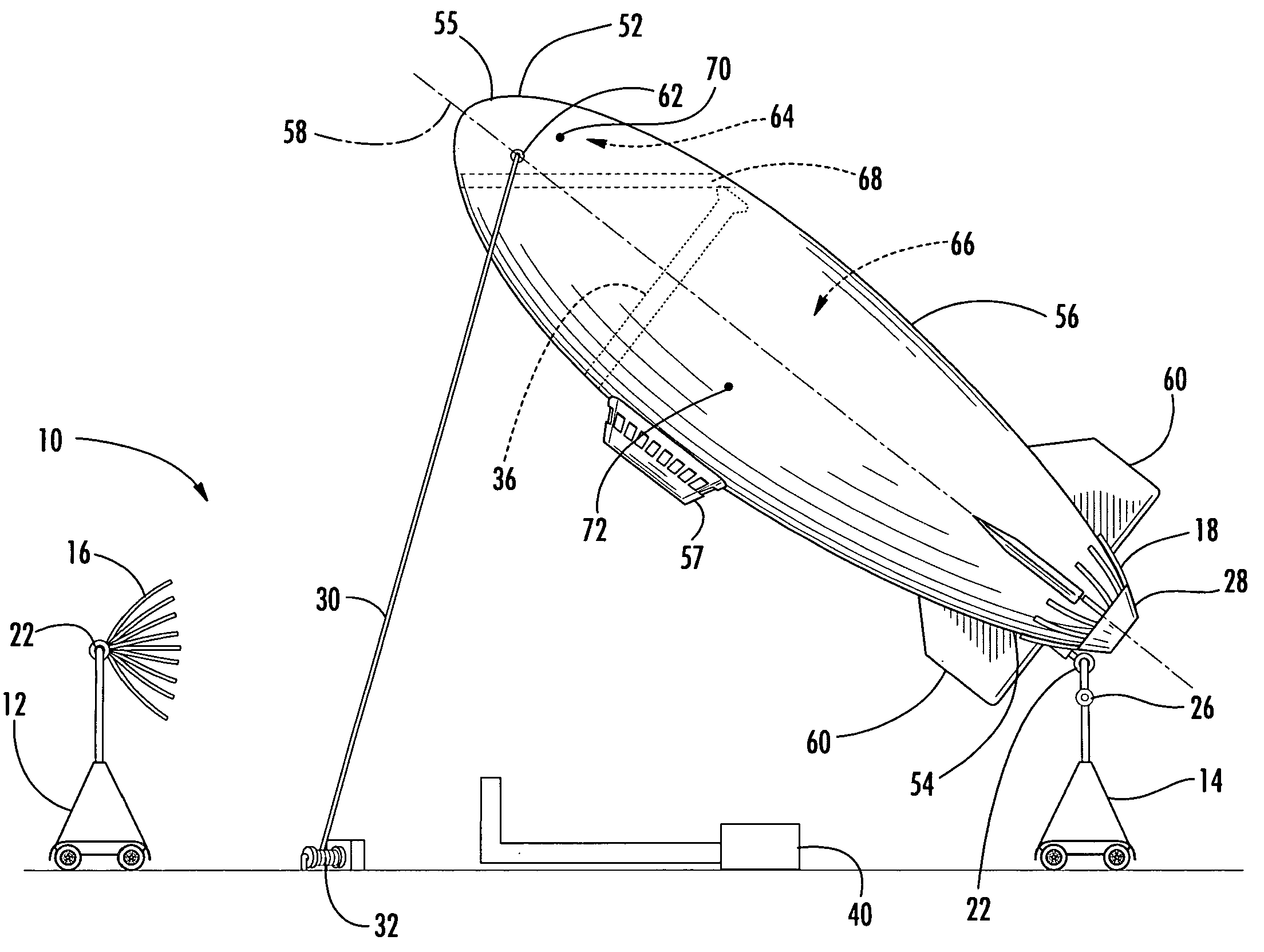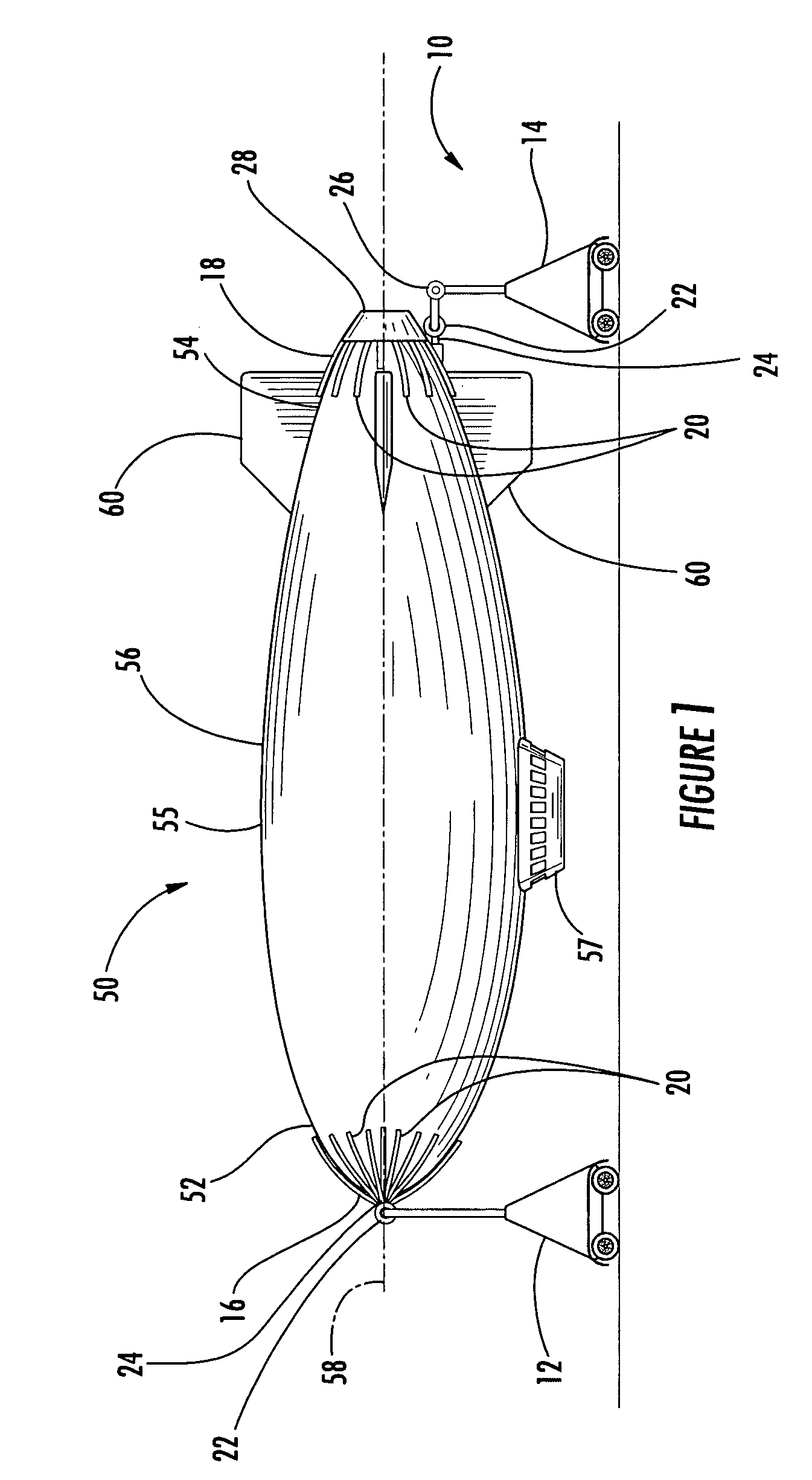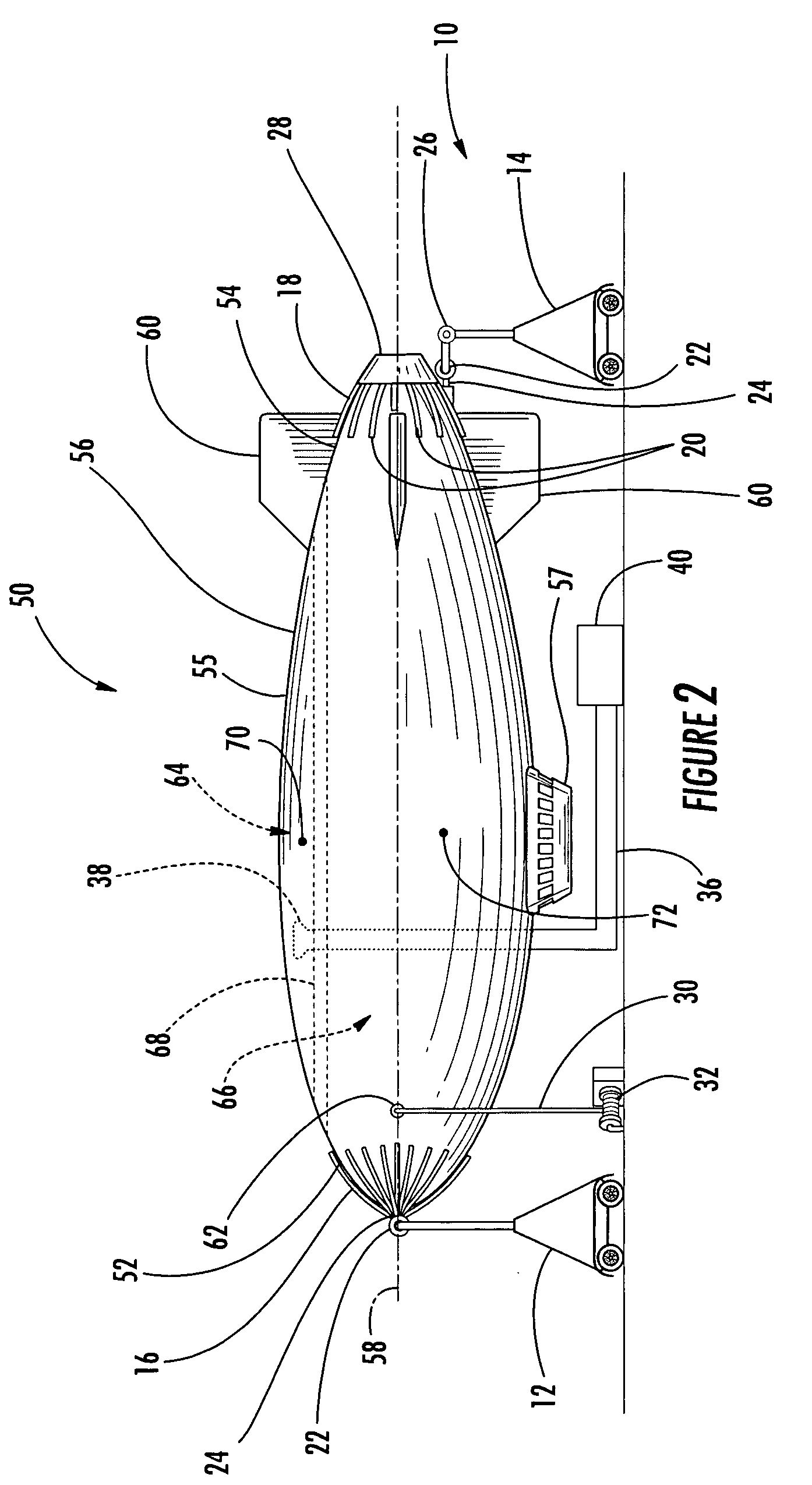Apparatus and method for lighter-than-air aircraft
a technology of aircraft and propellers, which is applied in the field of propellers and propellers for lighter-than-air aircraft, can solve the problems of increasing the weight of the aircraft, the necessary size and capacity of the gas-filled envelope, and labor-intensive and expensive conventional mooring operations, so as to reduce the mixing of gases in the envelope
- Summary
- Abstract
- Description
- Claims
- Application Information
AI Technical Summary
Benefits of technology
Problems solved by technology
Method used
Image
Examples
Embodiment Construction
[0026] The present invention now will be described more fully hereinafter with reference to the accompanying drawings, in which some, but not all embodiments of the invention are shown. Indeed, this invention may be embodied in many different forms and should not be construed as limited to the embodiments set forth herein; rather, these embodiments are provided so that this disclosure will satisfy applicable legal requirements. Like numbers refer to like elements throughout.
[0027] Referring now to the drawings, and in particular to FIG. 1, there is illustrated a lighter-than-air (LTA) aircraft 50 supported by a launch apparatus 10 having first and second masts 12, 14 configured to connect to a bow 52 and stem 54 of the aircraft 50, respectively. The aircraft 50 can be used for transportation, observation, communication, and a variety of other purposes. For example, the aircraft 50 can be a high altitude platform (HAP), which can ascend to an altitude of 50,000 feet or higher and in...
PUM
 Login to View More
Login to View More Abstract
Description
Claims
Application Information
 Login to View More
Login to View More - R&D
- Intellectual Property
- Life Sciences
- Materials
- Tech Scout
- Unparalleled Data Quality
- Higher Quality Content
- 60% Fewer Hallucinations
Browse by: Latest US Patents, China's latest patents, Technical Efficacy Thesaurus, Application Domain, Technology Topic, Popular Technical Reports.
© 2025 PatSnap. All rights reserved.Legal|Privacy policy|Modern Slavery Act Transparency Statement|Sitemap|About US| Contact US: help@patsnap.com



